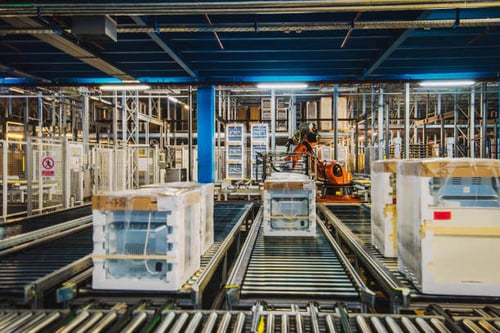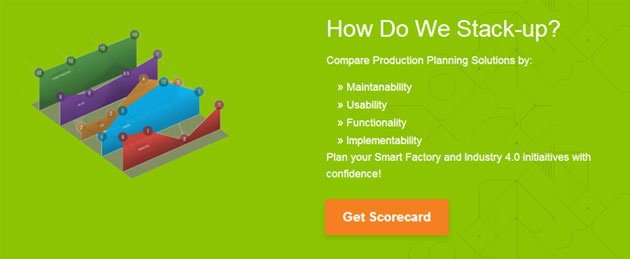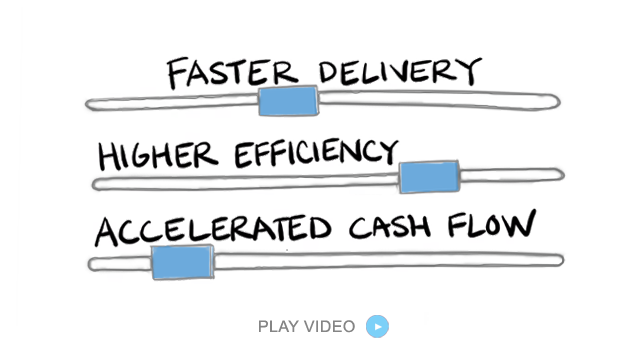Unlocking Smart Scheduling: How IoT Integration is Transforming Production Scheduling in Packaging and Containers Manufacturing
In the Packaging and Containers Manufacturing environment, the race to remain competitive has intensified. Production Schedulers are expected not only to align with daily production targets but also to juggle machine downtimes, raw material constraints, rush orders, and workforce availability — all in real-time.
This is where the Internet of Things (IoT) is stepping in as a game-changer.
For Production Schedulers seeking operational clarity, real-time responsiveness, and predictive insights, IoT integration is no longer a futuristic concept — it's an immediate necessity. When IoT is integrated with an Advanced Planning and Scheduling (APS) system like PlanetTogether, and seamlessly connected with ERP systems such as SAP, Oracle, Microsoft Dynamics, Kinaxis, or Aveva, it paves the way for smarter, more agile, and more profitable scheduling.

Understanding the IoT Advantage in Scheduling
The Internet of Things (IoT) refers to the network of physical devices — machines, sensors, tools, and systems — that are embedded with software and connectivity to collect and exchange data.
In a Packaging and Containers facility, this includes:
Sensors on conveyors and wrapping machines
RFID trackers for pallets and raw materials
PLC systems monitoring production lines
Smart maintenance systems on forming and sealing equipment
Temperature and humidity sensors for climate-sensitive packaging
When this data is captured and connected to your scheduling system, you create a living, breathing factory floor map that gives Production Schedulers unprecedented visibility and control.

From Static Schedules to Dynamic Execution
Traditionally, production schedules are built based on assumptions: forecasted demand, estimated machine capacity, standard cycle times, and fixed shift rosters. But in reality, nothing is static — orders get reprioritized, machines fail unexpectedly, and material deliveries are delayed.
With IoT devices feeding live data into PlanetTogether APS, scheduling transforms from being reactive to proactive and predictive.
Here’s how:
Live Machine Status: If a forming machine goes offline, PlanetTogether can instantly re-sequence orders based on available capacity, shift patterns, and customer priority.
Cycle Time Adjustments: If a sensor detects that a machine is running slower than usual due to wear, PlanetTogether can adjust the cycle time and alert maintenance to prevent unplanned downtime.
WIP Tracking: RFID or barcode scanning of work-in-process allows Production Schedulers to know exactly where each job stands — no more guesswork.

The Power of Integration: PlanetTogether + ERP + IoT
On its own, IoT generates an enormous amount of data. But data without context is just noise. The real magic happens when IoT data flows through a structured ecosystem that includes your ERP system and scheduling platform.
Let’s look at a few practical integrations:
PlanetTogether + SAP
SAP handles your order management, inventory, and procurement. When integrated with PlanetTogether and fed with IoT data, the result is:
Real-time updates on machine status impact available capacity in SAP’s MRP run
Predictive maintenance alerts from IoT devices can trigger auto-generated purchase orders for parts via SAP
Downtime reports feed into SAP analytics for performance benchmarking
PlanetTogether + Microsoft Dynamics
With Microsoft Dynamics tracking your financials and operations, coupling it with IoT and PlanetTogether enables:
Live synchronization of job orders between Dynamics and PlanetTogether
Automated alerts from IoT sensors that update production orders in Dynamics
Dashboards built in Power BI for visualizing bottlenecks and idle times
PlanetTogether + Kinaxis
Kinaxis shines in supply chain agility. When its planning power combines with PlanetTogether’s scheduling and IoT:
Any disruption on the line updates the production schedule and cascades through Kinaxis to update supply chain projections
Demand fluctuations trigger PlanetTogether to reprioritize production while Kinaxis adjusts procurement and logistics
PlanetTogether + Aveva
Aveva provides a strong MES and operational insight layer. Connected with IoT and PlanetTogether:
Sensor data triggers alerts in Aveva and schedules are auto-adjusted in PlanetTogether
Digital twins simulate different scheduling scenarios based on IoT data inputs
Preventive maintenance recommendations from Aveva feed directly into scheduling availability
Real-World Impact: What This Means for Production Schedulers
Let’s bring this home. Imagine this scenario in a packaging plant:
You’ve got a rush order for 50,000 clamshell packages due by Friday. Your forming machine is booked solid, but an IoT-enabled sensor detects an issue with the air pressure valve. This data flows to PlanetTogether, which instantly flags the forming machine for inspection and automatically shifts your schedule to use the backup line for the rush order. Meanwhile, a connected system like SAP generates a service ticket, and maintenance is dispatched in time — all without manual intervention.
For you as a Production Scheduler, this means:
Less time firefighting
More accurate schedules
Increased on-time delivery
Less stress and fewer surprises
As a Production Scheduler in the Packaging and Containers sector, your role is becoming more strategic than ever. IoT integration, when combined with a powerful scheduling engine like PlanetTogether and tied into systems like SAP, Oracle, Microsoft, Kinaxis, or Aveva, gives you a command center for production agility.
You don’t just make schedules anymore. You orchestrate the entire rhythm of the factory — with intelligence, precision, and speed.
The future of smart manufacturing scheduling is here. Are you ready to take your manufacturing operations to the next level? Contact us today to learn more about how PlanetTogether can help you achieve your goals and drive success in your industry.
Topics: PlanetTogether Software, Integrating PlanetTogether, Packaging Manufacturing, Real-time Updates on Machine Status, Live Synchronization of Job Orders, Auto-Adjusted Scheduling, Simulate Different Scheduling Scenarios





















LEAVE A COMMENT